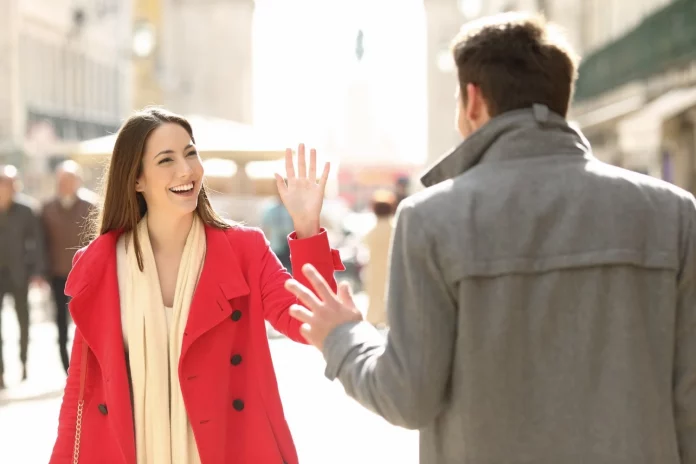Although majorly used by English speakers, it is one of the many English phrases that can be understood anywhere in the world. The problem would however be how to respond to it as there are many ways through which one can respond to “what’s up”, either in English or in another language. Below, we break down all the different ways to respond to the greeting as well as ways through which non-English speakers might respond to it in their languages.
What to Say When Someone Says What’s Up
The meaning of “what’s up?” and how you are expected to respond to it depends on the circumstances in which the question is asked. Generally, it can be categorized into two different aspects; a greeting or an inquiry. When replying to a “what’s up?” greeting, you are not expected to give a detailed rundown of your day or what exactly you might be going through. A brief and short response that confirms all is well would do just fine. The kind of response you give to the greeting would determine if further inquiry should be made or whether the exchange ends there. As an inquiry, on the other hand, “what’s up?” can also be used when the observer sees there is something wrong. It is a polite way of checking on another person that may appear to be in distress, similar to asking “what’s the problem”. Another way to use the phrase as an inquiry is when there has been a prior conversation on a subject and a progress report or the current situation of things is being asked about.
How to Reply to What’s Up
There are different ways to reply to “What’s Up”, whether as a greeting or an inquiry. The response all depends on how you want the conversation to go; whether you want to reveal much about how you are feeling or want it to end just there. Some of these responses could also be rib-cracking. Below are all the different ways through which “what’s up” can be replied to.
Responses to Quickly End the Conversation
- Fine, thank you This response is best suited to use when you are in a hurry or are not willing to let the conversation go any further. The person asking you the question would have to answer as you make your way out of the situation.
- Not much. What about you? Similar to the “I’m fine, how are you?” response, this does not give too much room for the conversation to go further as you have returned the question to the person asking. You, however, have done the most important thing which is to confirm that you are alright.
- Hey There This is one of those responses from the short and vague folder that will tell the person who asked the question that you are not really in any mood for some chit-chat.
- Can’t complain. Everything is fine Brief and straight to the point response that tells the inquirer that there is nothing new going on in your life. The person asking the question has gotten all the information they need about you.
- Nothing out of the ordinary. Same old, same old Because “what’s up” on its own can be vague when there wasn’t any prior conversation, giving a similarly vague response like this may be appropriate. This answer can either nudge the inquirer to ask more and be specific with their question or just end the conversation immediately.
- Work, work, work, and more work. Wish I could hang out sometime This straight-to-the-point response paints an accurate picture of your life when you are always swamped with work and barely have time to hang out with the crew as you used to in the past.
- You can’t help me so don’t bother asking Things might probably have already gone sour between you and the inquirer for you to be able to give a response like this. If the relationship is cordial and you say it, don’t expect to maintain the friendship. It simply means that they are of no use to you and can’t provide any help.
- I’m sorry I have a girlfriend/boyfriend The intention of the person saying what’s up might not necessarily be to have a go at you but your declaration that you are seeing someone will definitely prompt them to mind their business.
Responses That Can Lead to a Conversation
- Nothing great, just hanging in there This response will certainly lead to more inquiry as it can be interpreted as a cry for help.
- Not me, I’ve been quite depressed in the past few days Another response that can be interpreted as a cry for help, if the inquirer means well for you, they’ll certainly be more inquiry and conversation to ascertain what might be up with you.
- Having a great day, but it could be better if I were with you This will certainly work if you are trying to flirt with the person that asked you “what’s up”. It is one of those responses that would get the other person smiling.
- You know, just breathing and surviving This is another response that is straightforward and can be interpreted to be a cry for help since you have revealed that there isn’t quite anything to celebrate in your life.
- Definitely not my salary. I do not know what I am doing here This is a perfect response that can be given to a coworker to let them know how frustrated you might be at your place of work. Depending on the type of relationship you have with the person, the conversation might lead to something or just end there due to the awkwardness of your response.
- Living my best life. What about you? A clear response that says all is going well and that you are living your life to the fullest. The “what about you” allows the inquirer to respond before you can be given a chance to throw light on how you are living your best life.
Funny Responses
- I will have to kill you if I tell you Of course, you are not trying to kill anybody over anything. It is simply a joke that you can use with a friend or somebody you are trying to get close to. It will make you look mysterious, and also show you have a sense of humor.
- Definitely not what is down We already told you that when you are asked what’s up, the person is not making a literal inquisition as to what is actually up. However, that does not stop you from trying to be creative with your response. Using this particular one is certainly going to get the person smiling unless you have used it too much and then it could be annoying.
- The price of commodities This is a classic answer that would be a reflection of the economic situation when the prices of commodities are going through the roof and people can’t necessarily afford the things they used to. It’s a funny response to What’s Up” that can end up starting a whole conversation.
- The sky, clouds, and birds This is another example of you trying to be funny and choosing to literally answer what is up instead of facing the real intention of the question.
- Everything that ought to be up Similar to describing what exactly is up at the time that the question is asked, this response just tells the inquirer that everything that should be up is up. This could also imply that you are doing great and have no cause for concern.
- Me, I can clearly see the middle of your head from here When the person asking you “what’s up” is visibly shorter than you and they have to look all the way up when talking to you, this is an appropriate response that should send their ribs cracking.
- My blood pressure Scary but hilarious response to a rather simple “what’s up” question. Try it when you are sick and are in the hospital and someone walks up to you to ask “what’s up”.
- An animated movie by Pixar and Disney There is literally an animated movie called “Up” about an old widower who goes on an adventure in his flying house. So, when someone asks you what’s up and you are trying to be funny, tell them about the movie Up.
- Why? Did you hear anything? As earlier explained, what’s up can be a form of inquiry. You are playing on this fact by asking the person what they heard even though they might actually be using it as a form of greeting.
- A two-letter word made up of a vowel and a consonant With this response, you are literally describing what “up” is. You could go further to say that it indicates a direction that diametrically opposes the force of gravity.
- Anything that is taller than I am Well, if it’s taller than you then it is definitely up so your answer is not only accurate but funny.
- The behind of an ostrich when it is eating This response will definitely make the inquirer laugh because they have to picture the ass of an ostrich up in the air.
- The number of obese children in America This is a straight-up fact as the number of obese children in America has risen in the past few years.
- Waassaaaaaaap!!!! In a very loud and awkward manner, shout back what’s up in a slurpy way to the inquirer. Do this to someone you are very familiar with and both of you will end up laughing out loud.
How to Respond to What’s Up in Different Languages
While “what’s up” is one of those English phrases that is used and understood widely across the world, the response you get might not always be in English. This is because it is solely dependent on how the person asked the question, as either a greeting or inquiry. Most importantly, however, it will depend on their command of the English language. If you ask what’s up as a greeting, responses like “fine” and “ok” may not be an issue to use but when the question comes in the form of an inquiry and needs a complex response, the responder would most likely retort in a language they are most comfortable with. Also, when the responder tries to be funny and creative with their response, they will most likely use the language they are most familiar with. Below are examples of responses to what’s up in different languages from across the world.
- Japanese – Watashi wa genki (I’m fine), O kake-sa made genkidesu (I’m fine, thank you)
- German – Es geht mir gut, danke (I’m fine, thank you), Etwas gut machen. Was ist mit Ihnen? (Doing great. What about you?)
- Portuguese – Muito bem. Vocês? (Very well. You?), Tudo bem, obrigado (Fine, thank you.), Eu estou indo muito bem. E você? (I am doing very well. What about you?)
- Arabic – ‘ana bihalat jayidatin. wamadha eanka? (I am doing very well. What about you?), bikhayrin, shukran lak (fine, thank you).
- Korean – joh-a, gomawo (fine, thank you), jalhago iss-eo. dangsin-eun eottaeyo? (Doing great. What about you?)
- Russian – Khorosho spravlyat’sya. A vy? (Doing great. What about you?), YA v poryadke, spasibo (I’m fine, thank you)
- French – On fait bien. Qu’en pensez-vous? (Doing great. What about you?), Très bien. Toi? (Very well. You?),
- Spanish – Estoy bien gracias (I’m fine, thank you), Nada. ¿Qué pasa contigo? (Nothing. What’s going on with you?)
- Italian – Sto bene, grazie! (I’m well, thank you), Bene, grazie (Good, thanks), Non c’è male, grazie (Not bad).
- Turkish – Sana da merhaba (Hello to you, too), İyiyim teşekkürler (I’m fine, thank you)
- Swedish – jag mår bra tack (I’m fine, thank you), Gör bra ifrån sig. Hur är det med dig? (Doing great. What about you?)
- Dutch – Gaat goed. En jij dan? (Doing great. What about you?), Erg goed. Jij? (Very well. You?)
- Danish – Meget godt. Du? (Very well. You?), Ikke noget. Hvad er der med dig? (Nothing. What’s going on with you?)
- Norwegian – Bare bra, takk (Just fine, thanks), Jeg har det flott, Takk for at du spurte (I’m great, Thank you for asking)
- Hawaiian – Maikaʻi au, mahalo (I’m fine, thank you), Ke hana nui nei. Pehea lā? (Doing great, what about you?)
- Latin – bene, gratias ago tibi (fine, thank you), Nihil. Quid tecum agitur? (Nothing. What’s going on with you?)
- Vietnamese – Không. Chuyện gì đang xảy ra với bạn? (Nothing. What’s going on with you?),
- Chinese (Mandarin) – Wǒ hěn hǎo. Xièxiè nǐ (I’m fine. Thank you), Hěn hǎo. Nǐ? (Very well. You?)
- Nigerian Pidgin – I dey, what’s up? (I’m fine, how are you?), Nothing much, how your side? (Nothing really, what’s going on with you?)
- Swahili – Vizuri sana. wewe? (Very well. You?), niko sawa. Asante (I’m fine. Thank you)





